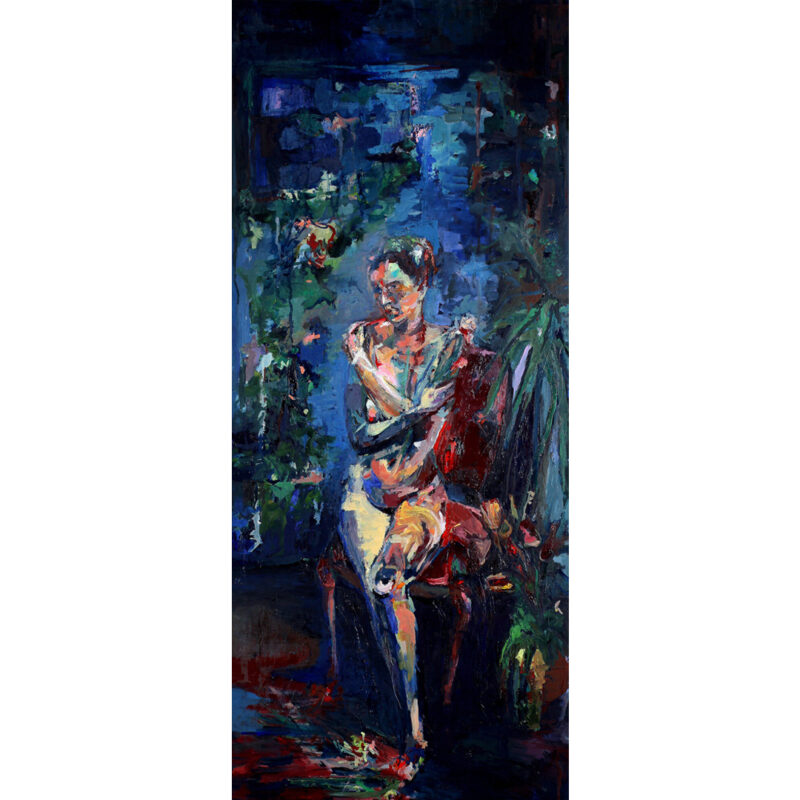Charlie Lasansky

Charlie Emmert’s intrinsic creativity and natural ability to link color with emotion perfectly complements her dexterity and enthusiasm for the paint and brush. The Iowa born artist has demonstrated, with the unveiling of her recent work, that she can fuse thought and feeling in the studio to produce paintings of stunning originality.
“Albert Einstein Number 3,” is a captivating and somewhat abstract portrayal of the brilliant thinker. It is the most recent in a series of portraits aspiring to capture the essence of Einstein’s character, his unique appearance, and explosive intellect. The painting clearly communicates Emmert’s belief that all of her work should possess “content, meaning, and expressive form.” She acknowledges Einstein’s scientific achievement with a solid red disk in the bottom left-hand corner of the canvas. The disk represents a solar eclipse, the natural phenomenon that provided proof for Einstein’s groundbreaking theories. The orientation of the disk in the space separating the edge of the canvas and the cropped red bars address the subject’s exceptional ability to think outside the box.
Emmert’s skill as a colorist has always been the focal component of her expressionistic portraiture. “Color,” says Emmert, “corresponds to the complexity of life.” In “Einstein Number 3” we see the artist looking at earlier works in the series to choose a predominantly blue and white palette. The colors suggest guilt and remorse, feelings that plagued Einstein after working with the U. S. to fabricate the Atomic Bomb. With touches of somewhat arbitrary color to the face and hair, Emmert was able to create a balanced and aesthetically pleasing image, which commemorates the most brilliant icon of the 20th century.
Emmert’s enthralling portraiture, always appealing to the eye, is generally bold and colorful. They are visually attractive but also are compelling psychological portraits, intimating the inner life of the subject. The preliminary sketch on a fresh canvas, done entirely with the brush, lays the foundation for numerous layers of paint. The layered pigment, often applied with the palette knife, creates texture, contrast, and depth. This can be seen in Emmert’s distinctive rendering of the artist Frida Kahlo. In this painting, Emmert constructs a fictive space, which separates her subject from the aura-like background. “Frida’s image is carefully placed within the painted frame for intimate viewing.” Points out art historian David Heffner, Ph. D. “Clearly there is an intimate connection between the artist and her subject.”
Charlie Emmert’s recent works showcase her ability to layer and manipulate paint. She communicates with vibrant color in place of words what she considers to be the true essence of her subject. Her innovative approach to portraiture publicizes her potential to be a significant artist in the future and reveals her eagerness to be working in the studio.
Charlie has had numerous one-person shows and has participated in various group shows. Her work is in private and public collections. The Faust Gallery in Scottsdale, Arizona carries her work, and the West Valley Art Museum will feature her work in a one-person show in March of 2007.



